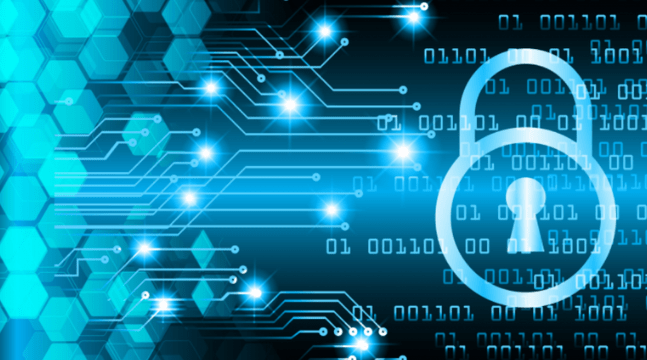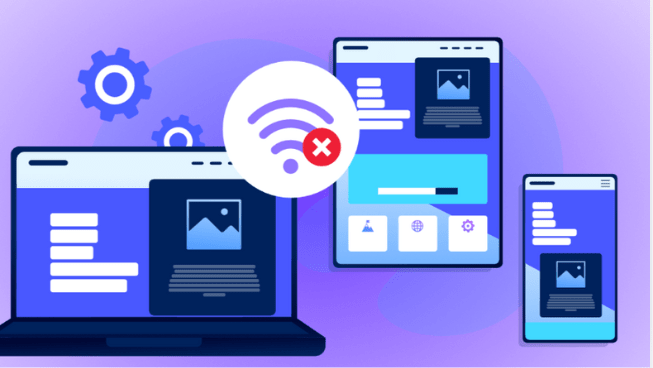Every time you connect to Wi-Fi, download an app, or open an email—you’re stepping onto a battlefield. And here’s the terrifying truth: most people don’t even know it.
Welcome to the digital age, where cybersecurity is no longer a choice—it’s a necessity. The threats are invisible, the attackers are relentless, and the stakes? Higher than ever.
Whether you’re an average smartphone user, a startup founder, or a Fortune 500 CEO, your data, your business, and your privacy are all under constant attack. And in this new era, firewalls and antivirus software just won’t cut it anymore.
In this article, we’ll uncover the real challenges of cybersecurity in the digital age—from sophisticated ransomware attacks to human error, state-sponsored hacking, and AI-powered threats. You’ll learn why the old rules no longer apply, and what needs to happen to survive in this hyper-connected world.
The Explosion of Cyber Threats: A Global Wake-Up Call
We’re generating more data than ever before. Every device, every click, every transaction is part of a digital footprint that hackers are eager to exploit. And they’re not waiting around.
Cybercrime has evolved from lone wolves in basements to billion-dollar criminal empires. The cost of cyberattacks is expected to hit $10.5 trillion annually by 2025—making it more profitable than the global drug trade.
Think about that for a second.
The most common and dangerous threats today include:
- Ransomware: Attackers lock your files and demand payment to unlock them.
- Phishing: Fake emails or messages trick users into giving up passwords or sensitive info.
- Data breaches: Hackers infiltrate systems and steal massive amounts of private data.
- Supply chain attacks: Targeting vendors to gain access to a company’s core systems.
- Zero-day exploits: Attacks launched using previously unknown software vulnerabilities.
Cyberattacks are no longer just annoying—they’re crippling hospitals, shutting down pipelines, and manipulating elections. This is digital warfare, and the battlefield is everywhere.
Why Cybersecurity Is Failing: The Harsh Reality
Despite all the buzz around cybersecurity, breaches continue to skyrocket. Why? Because the landscape has changed—but most defenses haven’t.
Here’s what’s going wrong:
Outdated Systems
Many organizations still rely on legacy software that hasn’t been updated in years. These outdated systems are a goldmine for hackers, full of unpatched vulnerabilities.
Human Error
Even with top-notch security protocols, a single careless click can bring down an entire company. In fact, over 90 percent of cyberattacks start with a human mistake.
Skills Gap
There’s a massive shortage of cybersecurity professionals. Businesses can’t find or afford the talent they need to defend against increasingly complex attacks.
Lack of Awareness
Most people don’t take cybersecurity seriously—until it’s too late. Weak passwords, unsecured Wi-Fi, and ignoring software updates are still incredibly common.
The Rise of AI and Machine Learning in Cybercrime
Artificial Intelligence isn’t just helping the good guys. Hackers are using AI to automate attacks, scan for vulnerabilities, and craft phishing emails that are indistinguishable from real ones.
AI-powered cyberattacks can:
- Evade traditional security tools
- Launch attacks at scale
- Mimic human behavior to fool systems
- Continuously adapt and learn from failed attempts
This means that cyberattacks are becoming faster, smarter, and harder to detect than ever before.
The next generation of threats won’t be launched by hackers—they’ll be triggered by self-learning AI systems trained to outsmart whatever defenses you have.
Remote Work: The New Frontier for Cybercriminals
When the world shifted to remote work, cybercriminals saw an opportunity—and pounced.
Why? Because home networks are nowhere near as secure as corporate ones. And suddenly, millions of employees were logging into sensitive company systems from laptops sitting on their kitchen tables.
Key vulnerabilities created by remote work include:
- Unsecured home Wi-Fi networks
- Personal devices used for work
- Unencrypted file sharing
- Lack of multi-factor authentication (MFA)
Companies that failed to adapt quickly became sitting ducks. Cybersecurity was no longer just an IT issue—it became a boardroom priority.
Cloud Vulnerabilities: Convenience Comes at a Cost
The cloud is amazing—until it leaks.
More and more companies are storing sensitive data in cloud platforms. But this convenience comes with new risks:
- Misconfigured cloud settings
- Shared responsibility confusion between providers and users
- Insufficient access control
- Data stored across multiple regions with different laws
One mistake in the cloud could expose millions of customer records, financial data, or trade secrets—overnight.
Cybersecurity in the cloud demands constant monitoring, strict access control, and airtight encryption. Anything less is a liability.
The Government’s Role: Regulation or Retaliation?
Cybersecurity isn’t just a private sector issue anymore. Governments around the world are stepping in—but not always in the ways you’d expect.
Here’s what’s happening:
- Tougher data protection laws like GDPR and CCPA are holding companies accountable for breaches.
- National cybersecurity strategies are being developed to protect critical infrastructure.
- International cyber treaties are being proposed to prevent digital warfare.
At the same time, state-sponsored cyberattacks are on the rise. Countries are now using hackers as digital soldiers to steal secrets, disrupt economies, and spy on adversaries.
Cybersecurity has officially become a matter of national security.
Small Businesses: The Most Vulnerable Targets
Think cybercriminals only go after big corporations? Think again.
43 percent of cyberattacks target small businesses—but only 14 percent are prepared to defend themselves.
Why? Because small companies often:
- Lack dedicated cybersecurity staff
- Use free or outdated security software
- Don’t have incident response plans
- Underestimate the value of their data
The result? A single cyberattack can bankrupt a small business in days.
Cybersecurity must be treated as a business survival strategy, not an afterthought.
What Needs to Change: A Cybersecurity Mindset Shift
So what’s the solution? It starts with rethinking how we approach cybersecurity. This is no longer about setting up a firewall and hoping for the best.
Here’s what needs to happen:
Security by Design
Build cybersecurity into products, services, and systems from the start—not as an afterthought.
Continuous Monitoring
Set up systems that detect and respond in real time, not days or weeks later.
Zero Trust Architecture
Assume no one and nothing is trustworthy until proven otherwise—inside or outside your network.
Employee Training
Human error is the biggest risk. Regular training is essential to build a cyber-aware culture.
Cyber Resilience
Accept that breaches will happen—and prepare for how quickly you can respond, recover, and continue operating.
Cybersecurity isn’t just about protection. It’s about resilience, adaptation, and survival.
Conclusion: We’re Already in the Cyber War—And Ignoring It Is No Longer an Option
The digital age has given us incredible power—but with it comes unprecedented vulnerability. Every connection, every password, every device is a potential entry point for those who want to steal, disrupt, or destroy.
This isn’t just an IT issue. It’s a life issue, a business issue, and a national issue.
The challenges are evolving faster than most people can keep up with—but so are the solutions. AI can defend just as much as it can attack. Education can close the human error gap. And smart planning can transform even the smallest business into a digital fortress.
The bottom line? Cybersecurity is no longer optional. It’s your first line of defense in a world that’s always online—and always under attack.
FAQs
Q1: What are the most common cybersecurity threats today?
The most common threats include phishing attacks, ransomware, data breaches, malware, and denial-of-service (DoS) attacks. These threats target both individuals and businesses across all industries.
Q2: Why are small businesses often targeted by cybercriminals?
Small businesses typically have fewer resources and less robust security systems, making them easier targets for hackers. They often lack dedicated IT teams and may underestimate the value of their data.
Q3: How can companies protect themselves from cyberattacks?
Companies should implement multi-factor authentication, train employees regularly, encrypt sensitive data, update software frequently, and establish an incident response plan.
Q4: What is a Zero Trust model in cybersecurity?
Zero Trust is a security framework where no user or system is trusted by default, even if they are inside the network. It requires continuous verification before granting access.
Q5: How does AI impact cybersecurity?
AI enhances cybersecurity by automating threat detection, identifying anomalies, and responding to incidents faster. However, it can also be used by attackers to create more sophisticated threats.
Q6: Is cloud storage safe?
Cloud storage is generally safe if properly configured and secured. Risks arise from misconfigurations, poor access control, and weak encryption practices. Shared responsibility between providers and users is crucial.



